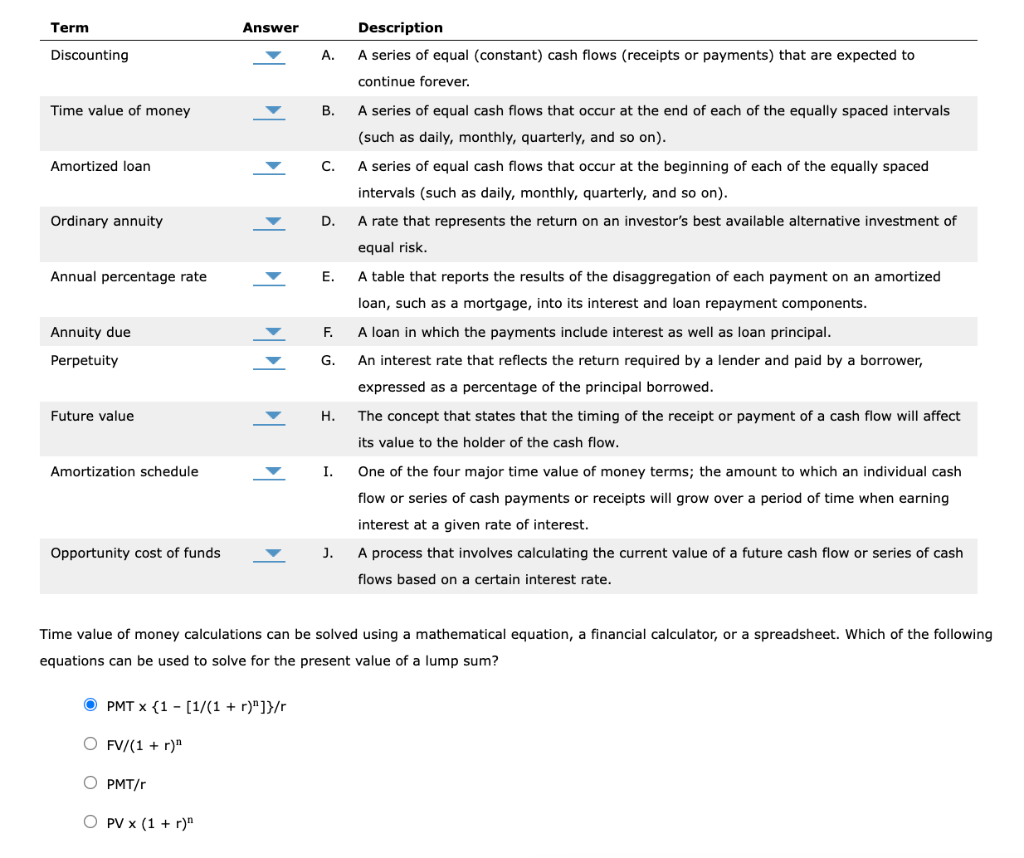Answered step by step
Verified Expert Solution
Question
1 Approved Answer
Help please! Term Description Discounting A. A series of equal (constant) cash flows (receipts or payments) that are expected to continue forever. Time value of

Help please!
Term Description Discounting A. A series of equal (constant) cash flows (receipts or payments) that are expected to continue forever. Time value of money B. A series of equal cash flows that occur at the end of each of the equally spaced intervals (such as daily, monthly, quarterly, and so on). Amortized loan C. A series of equal cash flows that occur at the beginning of each of the equally spaced intervals (such as daily, monthly, quarterly, and so on). Ordinary annuity D. A rate that represents the return on an investor's best available alternative investment of equal risk. Annual percentage rate E. A table that reports the results of the disaggregation of each payment on an amortized loan, such as a mortgage, into its interest and loan repayment components. Annuity due F. A loan in which the payments include interest as well as loan principal. Perpetuity G. An interest rate that reflects the return required by a lender and paid by a borrower, expressed as a percentage of the principal borrowed. Future value H. The concept that states that the timing of the receipt or payment of a cash flow will affect its value to the holder of the cash flow. Amortization schedule I. One of the four major time value of money terms; the amount to which an individual cash flow or series of cash payments or receipts will grow over a period of time when earning interest at a given rate of interest. Opportunity cost of funds. J. A process that involves calculating the current value of a future cash flow or series of cash flows based on a certain interest rate. Time value of money calculations can be solved using a mathematical equation, a financial calculator, or a spreadsheet. Which of the following equations can be used to solve for the present value of a lump sum? PMT x {1 [1/(1 + r)"]}/r O FV/(1 + r) O PMT/r O PV x (1 + r)Step by Step Solution
There are 3 Steps involved in it
Step: 1

Get Instant Access to Expert-Tailored Solutions
See step-by-step solutions with expert insights and AI powered tools for academic success
Step: 2

Step: 3

Ace Your Homework with AI
Get the answers you need in no time with our AI-driven, step-by-step assistance
Get Started


